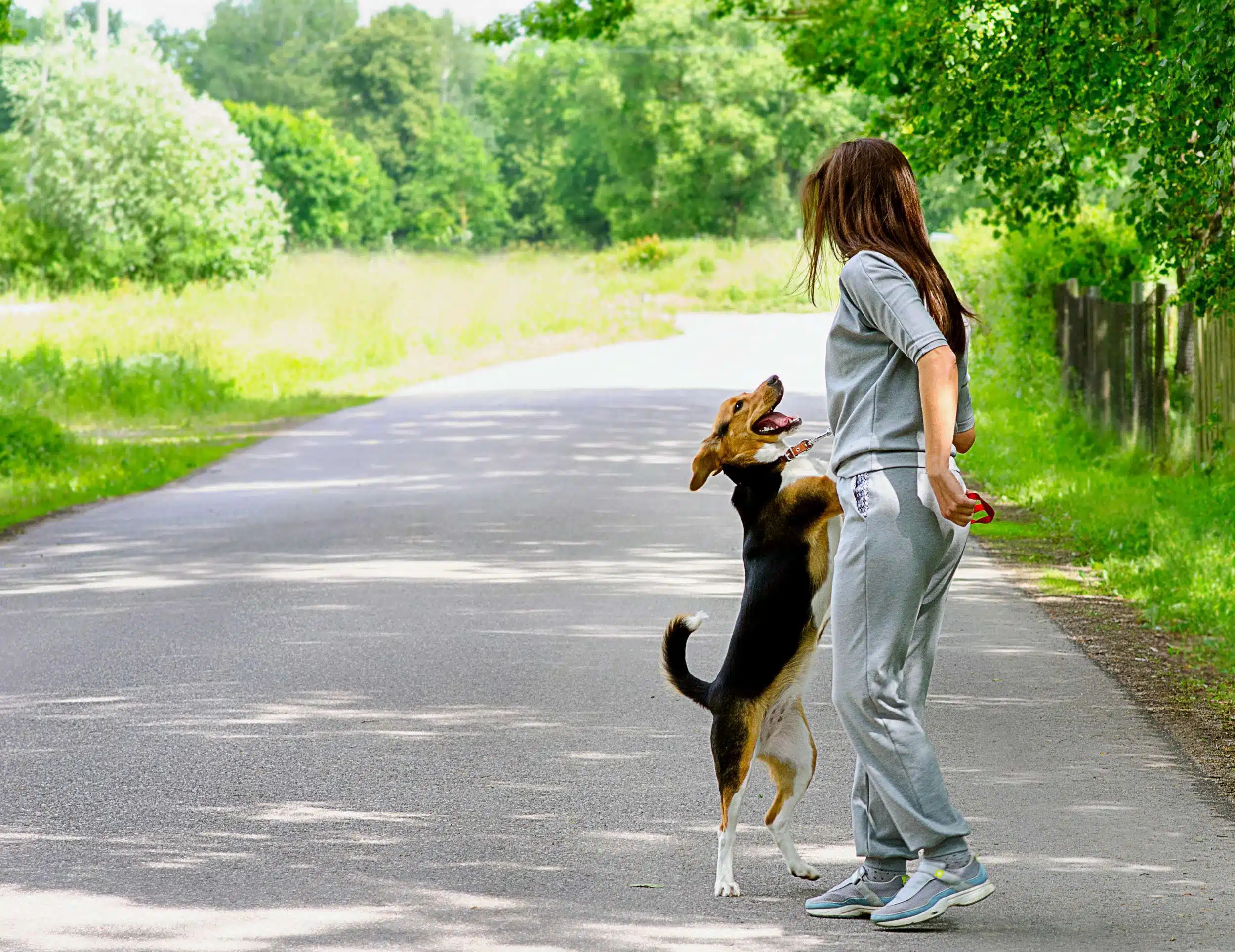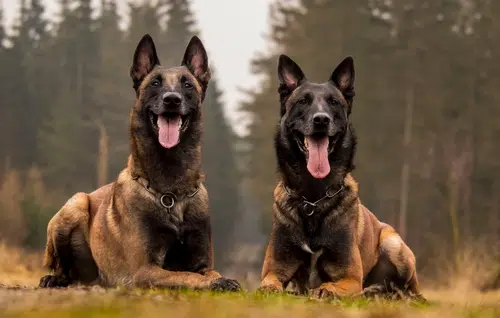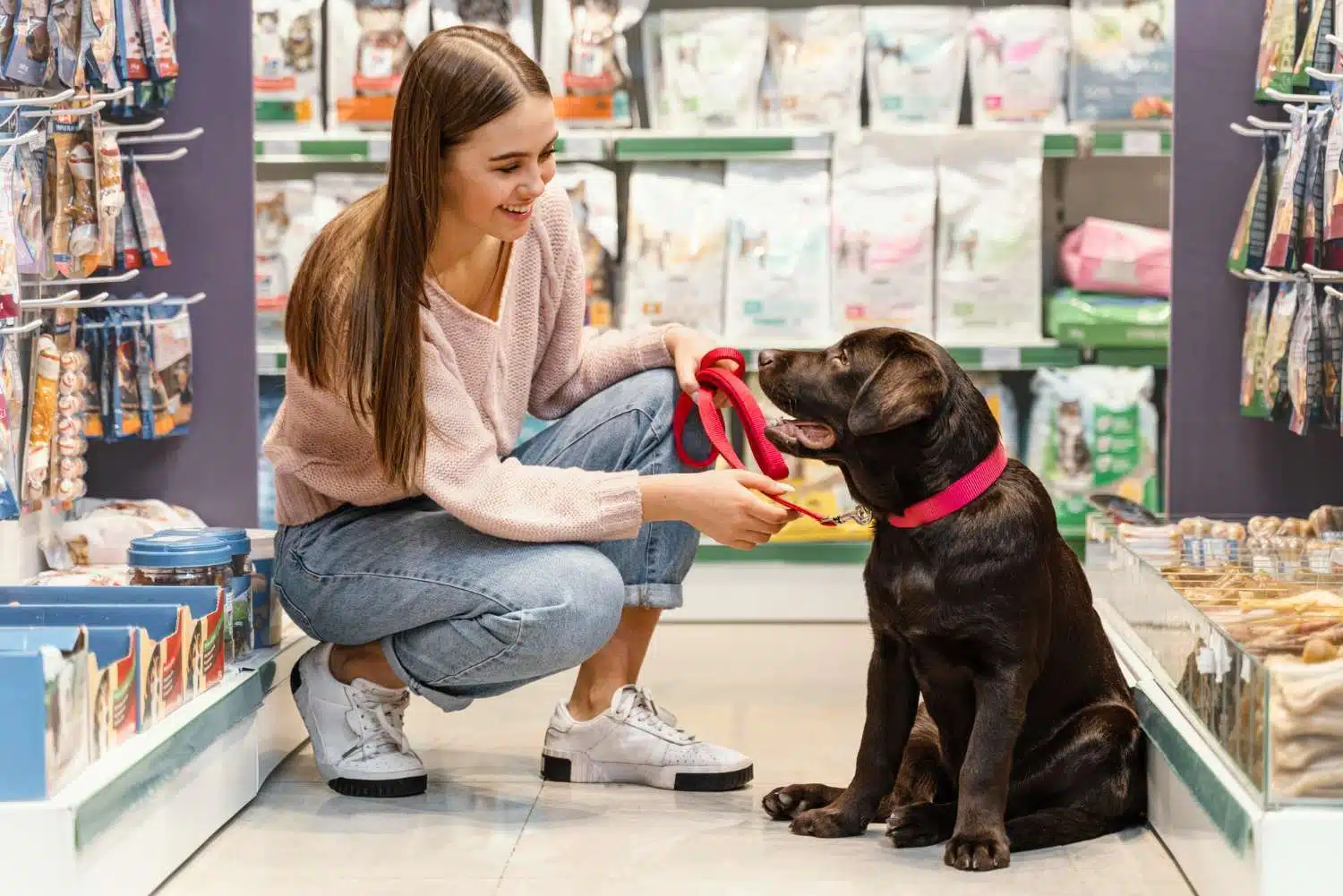Walking your dog is one of the best things you can do for its overall health and happiness. Beyond the obvious exercise benefits, regular walks provide dogs with essential stimulation, socialization, and opportunities to explore their environment. For many dogs, especially those living in urban areas or confined spaces, walks offer a vital outlet for excess energy and help prevent boredom-induced behavioral issues. But if you don’t do it properly, then you and your pup will both find it a frustrating experience.
All dog owners want to believe that walking a dog is as simple as putting on a leash and heading out the door. But the reality is that most dogs (and their owners) will need some time and practice to get it right. Otherwise, both will be pulling in different directions the whole time.
Here are some tips to make your dog walk a success.
1) Start with the right equipment
A basic leash or lead is generally all you need here. The leash should be no more than 6 feet long (4 feet is better for control if you’re new to dog walks). Avoid retractable leashes while you’re trying to master the dog walk. Those are ideal for situations in which you’re letting your dog explore areas in a more casual setting, separate from the structure of a dog walk. If your dog is pulling too much on the leash, a dog harness can be an effective substitute, giving you more control of the walk while still making it comfortable for your pup.
Here are the right equipments for walking dogs:
- Leash
- Collar or Harness
- Identification Tags
- Waste Bags
- Water and Bowl
- Reflective Gear
By having the right equipment, you can ensure that walks with your furry friend are safe, enjoyable, and fulfilling for both of you.
Meet: Glen of Imaal Terrier
2) Aim for the J-shape
This may take some time, but the goal of your dog walk should be for both of you to walk together at a brisk, focused pace. Neither of you should be pulling the other. In fact, in an ideal walk, the leash should be somewhat slack, forming a J shape.
- Walking with a slack leash in a J-shape signals a strong connection and communication between you and your dog. It shows leadership and direction.
- This walking style reduces strain on your dog’s neck and throat, ensuring they walk in a natural and comfortable position.
- Walking calmly beside you with a slack leash gives you better control, minimizing the risk of incidents or accidents, especially in crowded or unexpected situations.
- Encouraging your dog to walk in the J-shape reinforces positive training behaviors and teaches them to focus on you.
- Walking in this manner engages your dog mentally, keeping them attentive to their surroundings and responsive to your cues.
Achieving the J-shape in your dog walks requires patience, consistency, and positive reinforcement.
3) Reward good behavior
How do you achieve the coveted J shape leash? The key is to reward your pup for walking properly, according to the American Kennel Club (AKC). When your dog gets ahead of you, stop and change direction (without yanking!). Then, when he turns to catch up, praise him and quickly reward him with a small treat.
Rewarding good behavior is a fundamental aspect of effective dog training and fostering a strong bond between you and your furry friend. When you acknowledge and reinforce positive actions, such as walking calmly beside you or obeying commands, your dog is more inclined to repeat those behaviors in the future. By offering treats, praise, or playtime as rewards, you not only encourage desired actions but also build trust and mutual understanding.
Meet: Glen of Imaal Terrier
4) Resume walking only when the leash is slack
Don’t turn the treat into a prolonged snack. The real reward is resuming the walk – but only when your pup is ready to do it properly. After praising, start walking again while the leash is still slack. If pup is pulling or distracted, wait until he’s calm and the leash is slack before walking again.
This method reinforces the idea that walking with a slack leash leads to the desired outcome of continuing the walk, promoting better leash manners and a more enjoyable walking experience for both you and your dog.
5) Allow light exploration
Part of a dog’s love of walking is exploring the world and taking in the endless scents of nature and other animals. To entirely deprive your dog of this experience is to remove the satisfaction of the walk altogether.
That said, stopping every 5 feet to sniff every leaf isn’t best for dog walking, either. So the solution is finding a happy medium. Some dog owners will include a mix of structured dog walking, broken up by periods of exploration and sniffing. It can be useful to designate a specific spot (or multiple) for this exploration, which will give your pup an extra incentive for keeping the walk brisk. The exploration time thus becomes an extra reward for keeping the walk on pace.
Want more tips? Be sure to sign up – it’s free!
Sign up to get more great tips, dog training advice, fun stories, and more delivered to your inbox.
Interesting Reads:
Meet: Harrier
How to Stop a Puppy From Walking Under Your Feet








Get involved!
Comments